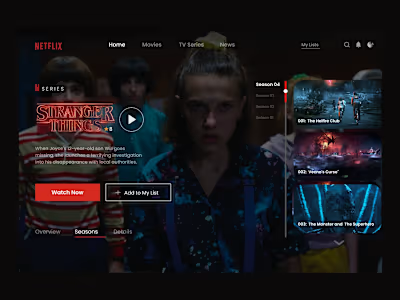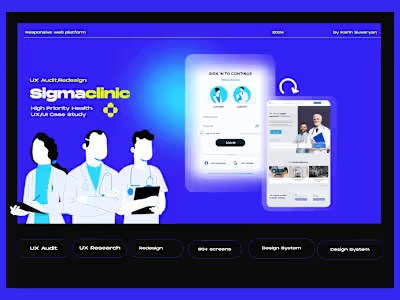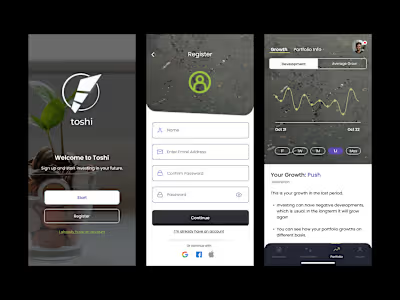Omniwell — A VR Meditation Experience for Visual Healing
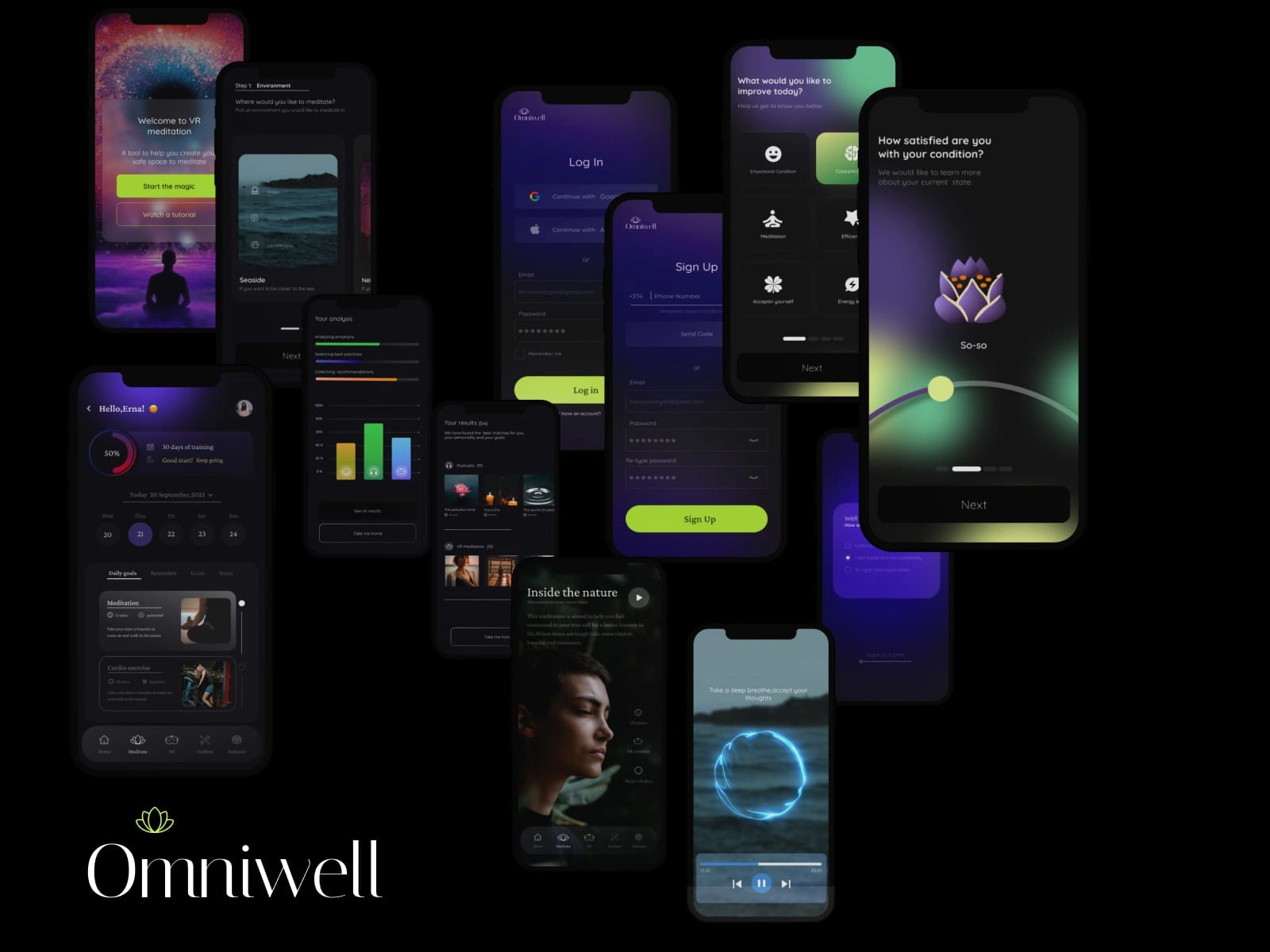
Omniwell — A VR Meditation Experience for Visual Healing
🧘♀️ Project Overview
Omniwell is not your typical meditation app — it’s a VR-powered experience that transforms inner healing into something you can see, feel, and move through.
The goal? Create a guided meditation experience that helps users manifest their desired emotions using visual triggers, interactive moments, and deeply personal symbolism. Omniwell is a space where users don’t just hear the intention — they watch it come alive.This project isn’t just UX focused. This is emotional design in immersive 3D form.
🌸 Want to feel peace? You might watch a flower bloom around you.
🔥 Need to release anger? You’ll watch it burn away as flames dissolve into light.
🌊 Seeking clarity? You’re placed underwater, light refracting, silence surrounding.
Core Intentions:
Help users see the emotions they want to embody
Use guided visual storytelling to enhance meditation
Design for calm, presence, and meaning — not just functionality
a fast prototype that showcases the VR experience in the app
🧘 Scope of Work
I led this project from concept to prototype, focusing on crafting a deeply emotional and immersive user experience that leverages VR for guided meditation and manifestation.
Core Responsibilities:
Researching emotional and visual triggers in mindfulness and meditation practices
Developing core meditation journeys based on desired emotional outcomes (calm, focus, release, joy, etc.)
Storyboarding the visual flow for each guided session (scene transitions, motion cues, symbolic imagery)
Designing intuitive, low-interference UI that guides users gently without pulling them out of presence
Defining the product structure across three tiers: Intention → Visual Immersion → Integration
Creating a scalable design system for future scenes, emotions, and modules
Prototyping in Figma to communicate flow, animation cues, and transitions for dev teams
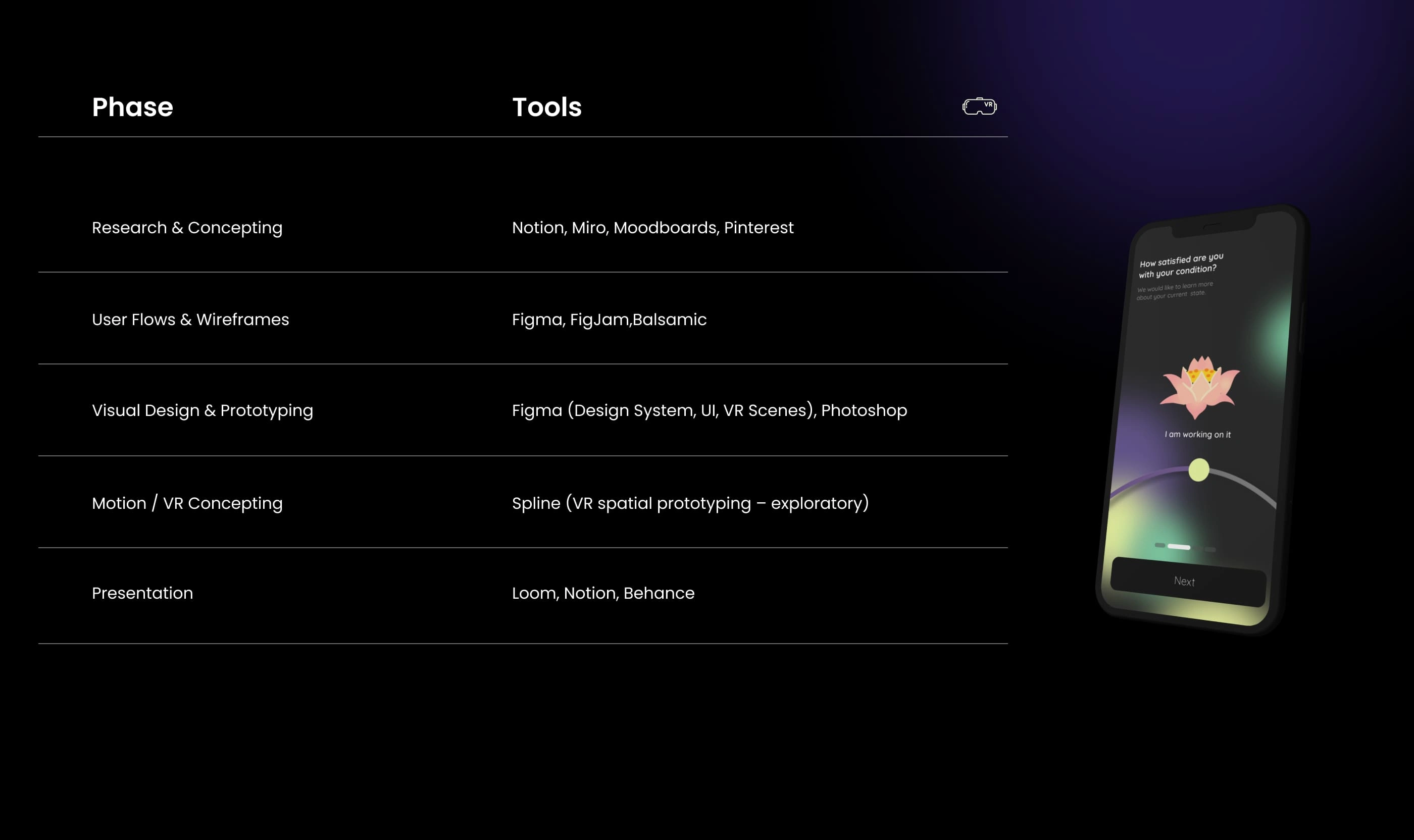
A carefully selected toolkit to translate emotions into immersive design — from ideation to prototyping VR experiences with intention and clarity.
🌸 Emotional Design Research & Journey Crafting
The foundation of Omniwell’s experience was rooted in a question:
How do you turn feelings into visuals — and visuals into healing?
To answer that, I began with in-depth research into emotional and visual triggers used in mindfulness, meditation, and manifestation practices. I explored everything from color psychology and symbolism in spiritual rituals, to how sensory immersion impacts emotional regulation in VR environments. This helped define a visual vocabulary that actually feels the way the user wants to feel — calm, focused, empowered, released.
From there, I mapped emotional intentions to visual journeys. For example:
Calm → flowing water, soft blue haze, expanding light
Focus → centered movement, tunnel vision, rising sun
Release → crumbling walls, disappearing fog, flame dissolving into dust
Joy → blooming fields, upward motion, radiant color shifts
Each meditation session became a curated experience — one that starts with intention-setting and ends in transformation.
I then storyboarded the visual flow of each meditation — almost like directing a short film. Every scene had a purpose: whether it's guiding the user to let go, ground themselves, or visualize their growth. Transitions were designed to be symbolic and emotional (e.g., floating from darkness into light, walking through a blooming forest, or watching the sky shift in response to breath).
By blending emotional design principles, symbolic storytelling, and immersive interaction, the goal was simple but powerful:
Let the user see the healing happen — and feel it for real.
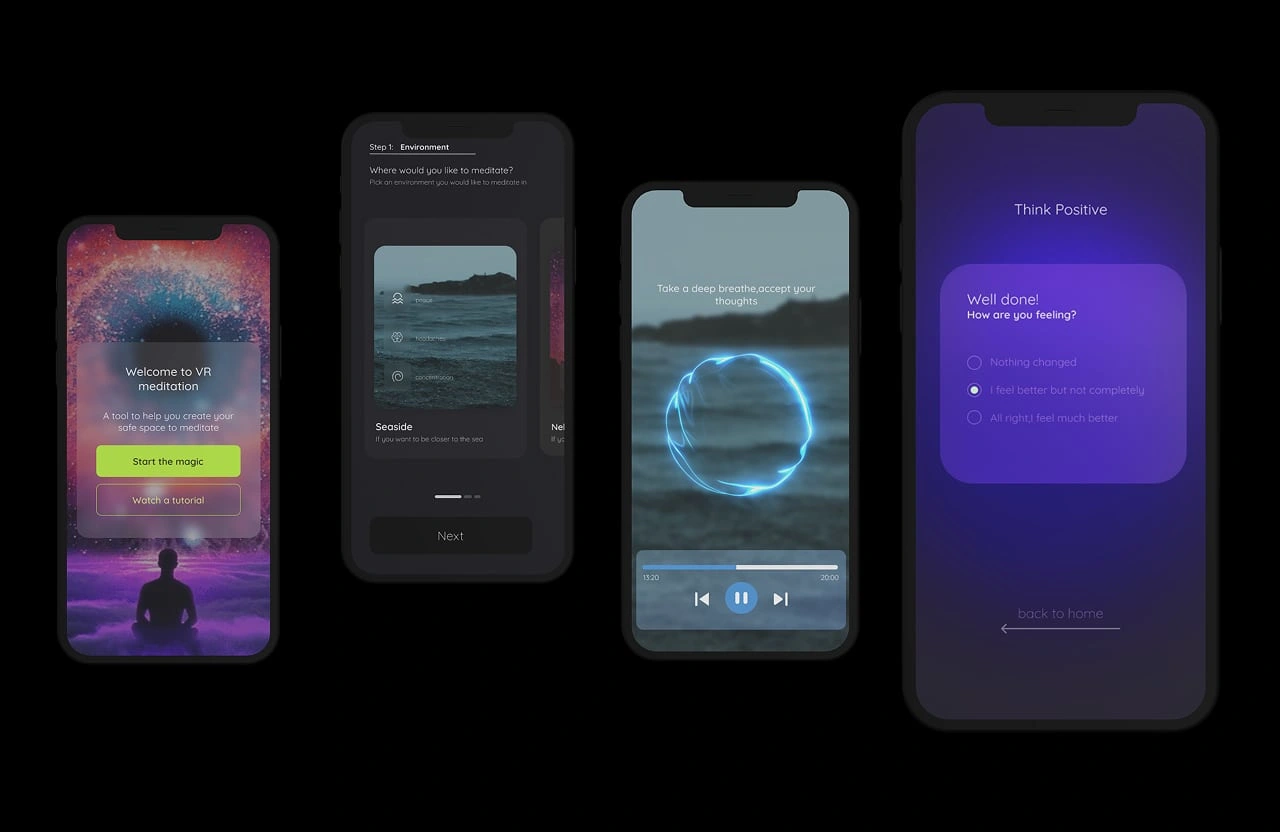
: A glimpse into the guided VR flow — where inner transformation is visualized through symbolic, immersive storytelling.
🔮 UX Philosophy
The main question I had to answer:
How do you design a user journey that disappears the moment they arrive in it?
Unlike traditional apps, Omniwell’s UX is intentionally invisible. Navigation melts into the background. The user doesn't scroll or tap — they enter, observe, and let go.
Key UX Patterns:
Intention Setting → Visual Immersion → Guided Manifestation → Emotional Release
Minimal UI. Maximal visual emotion.
Custom “states” that reflect common emotional needs: Calm, Focused, Rested, Inspired
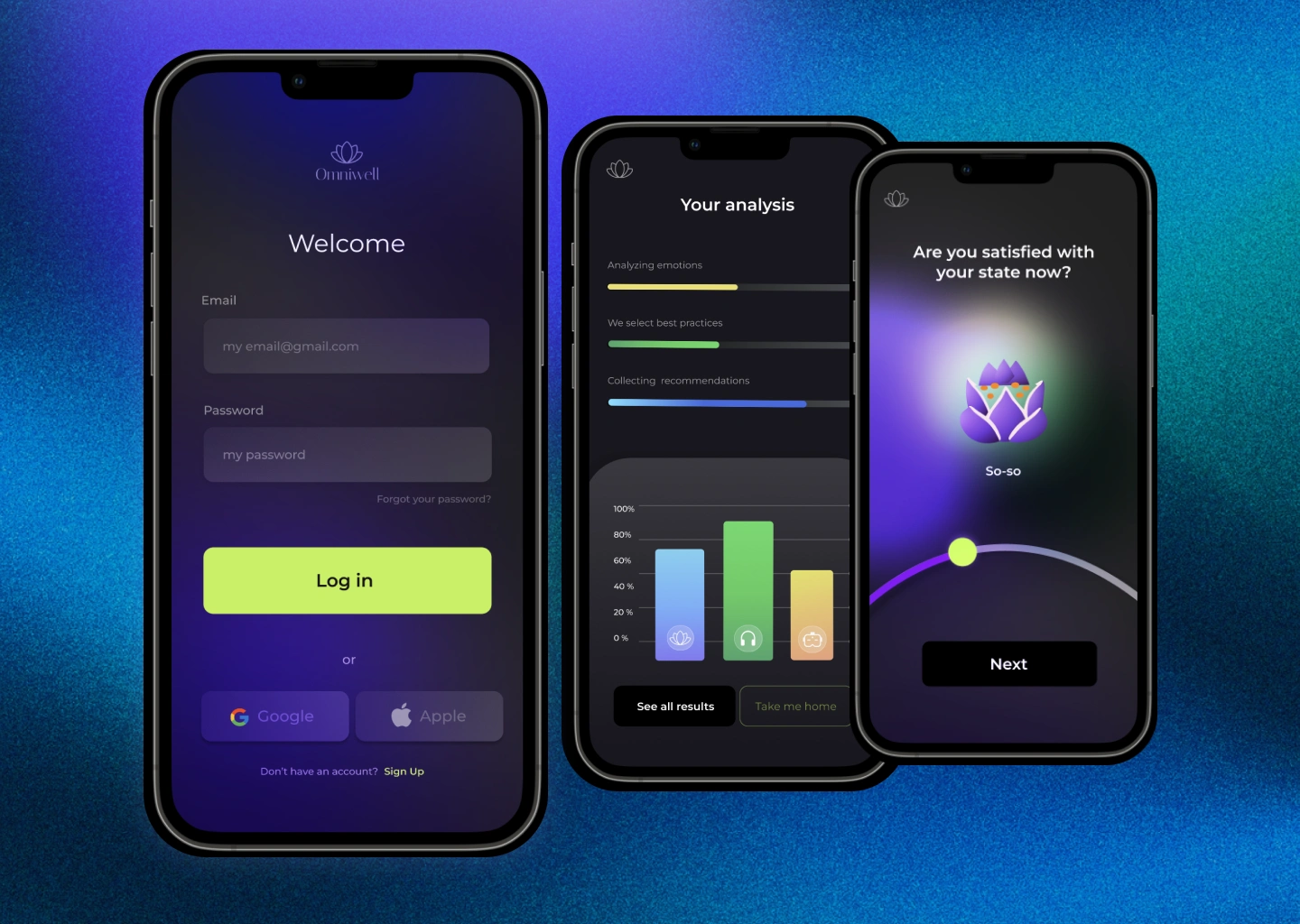
Smooth onboarding with third-party logins and calming UI to welcome users into a mindful space.
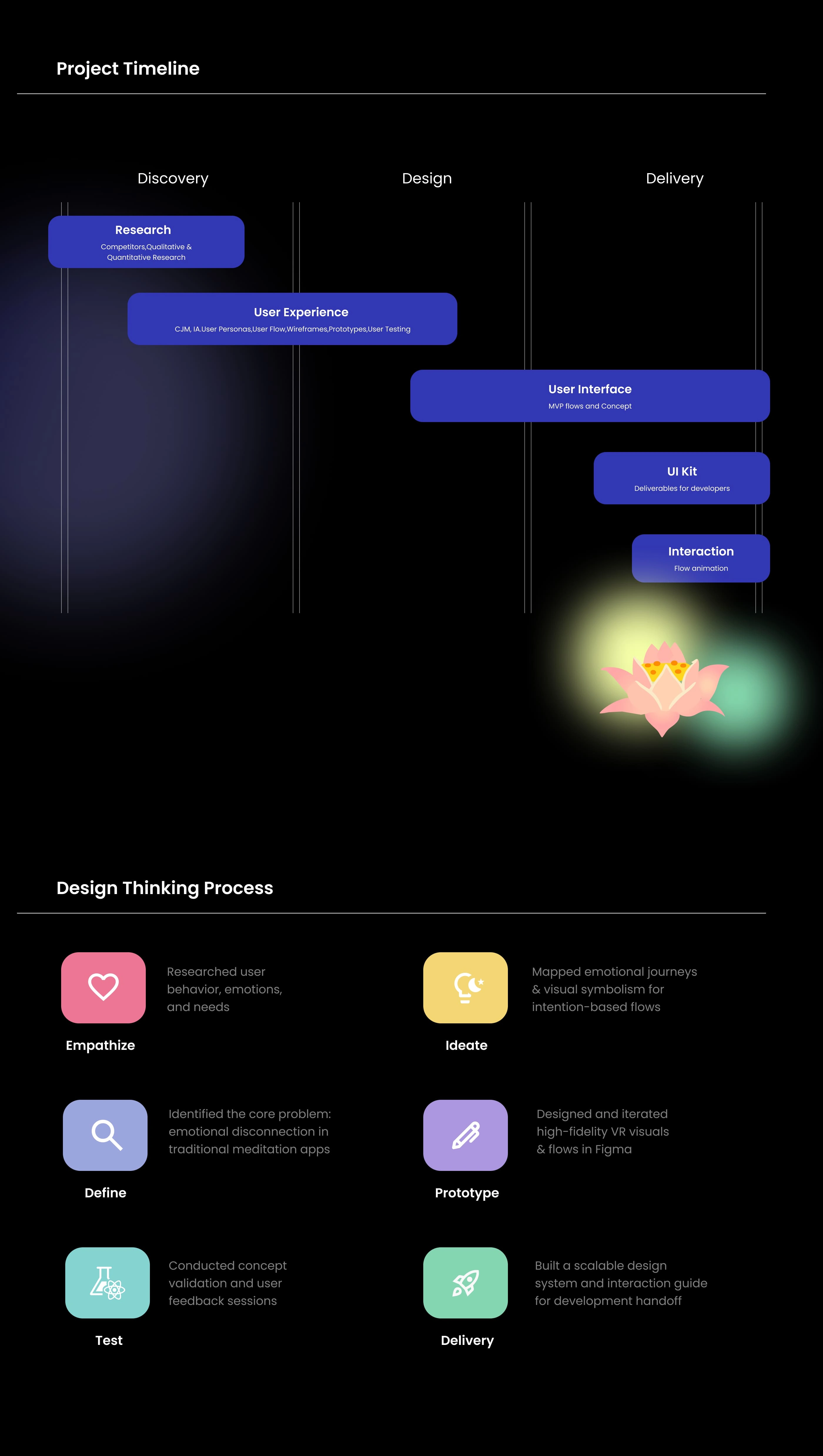
Design Process Overview
Why I Chose What I Chose — and What It Was All For
Omniwell was more than just an app—it was a space I wanted people to feel. A safe, intention-led, and emotionally immersive sanctuary. From the start, I approached this project not just as a UX/UI designer, but as an emotional architect. My goal? Create a visually symbolic, energetically intuitive VR experience that meets people where they are—mentally and emotionally—and gently guides them somewhere better.
1. Emotional Journey Mapping
From there, I built user stories and journey maps tied to emotional goals—not just app features. For example:
“As a user feeling emotionally overwhelmed, I want to quickly anchor myself with a visual or sound so I can ground without overthinking.”
Why: People don’t always have the words for how they feel—but they know what they need when they see or feel it.
2. Symbolic UI & Visual Language
I leaned into symbolism and spatial metaphors. The lotus wasn’t just pretty—it represents growth from darkness to light. Mood sliders glowed, because your energy should radiate back at you. Dark UI with neon gradients reflected the inner world—soft but powerful.
Why: VR and meditation are sensory. Every color, every transition, every icon needed to feel intentional and emotionally resonant.
3. Prototyping in 3D Flow
Using Figma and Spline,I built prototypes that felt more like emotional journeys than clickable screens. I storyboarded guided sessions like films—each moment had a rhythm, a purpose.
Why: I wanted motion and flow to mimic a meditative breath—slow, intentional, expansive.
4.Feedback & Emotional Validation
I tested key flows with real users who meditate, people new to wellness, and even those resistant to digital mindfulness. They described the experience as “gentle,” “safe,” and “unexpectedly personal.”
Why: Design isn’t just about usability—it’s about how it makes someone feel five minutes later, or five days later.
The lotus is a universal symbol of transformation, peace, and inner growth. This visual metaphor creates emotional validation without judgment—it tells the user: “Wherever you are, it’s okay. You’re growing.”
It’s not just UI—it’s a moment of reflection.
🔍 Research Overview
Before jumping into visuals or interactions, I dove deep into the world of mindfulness, meditation psychology, and emotional triggers in immersive environments. The goal? To understand what makes users feel safe, seen, and soothed—especially in a digital/VR space where emotions and visuals collide.
1. Goals of Research
Understand user needs and barriers around meditation and self-regulation.
Identify what motivates users to engage regularly with mindfulness tools.
Explore emotional triggers and symbols that enhance immersion.
Validate concepts for emotional tracking via visuals and metaphors.
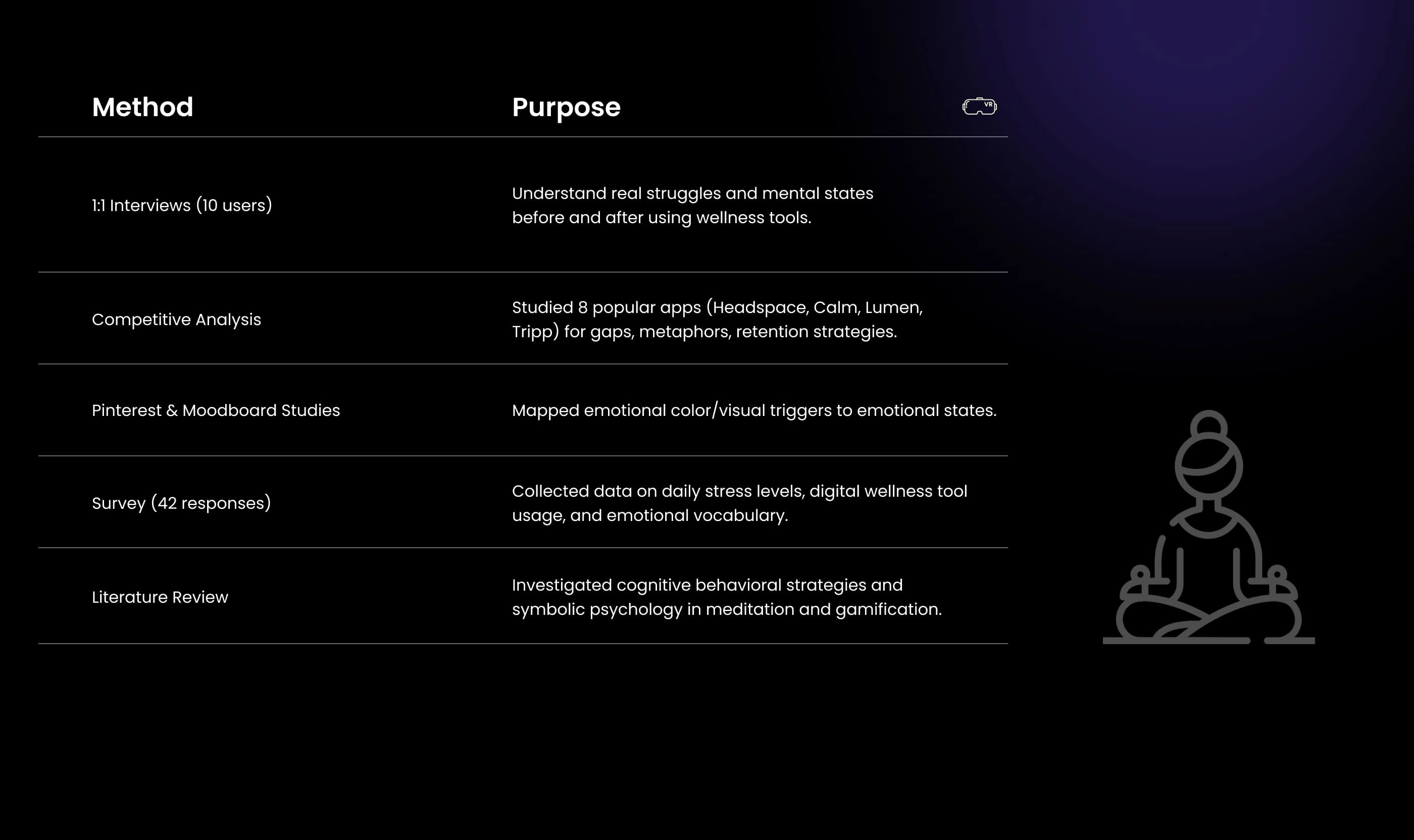
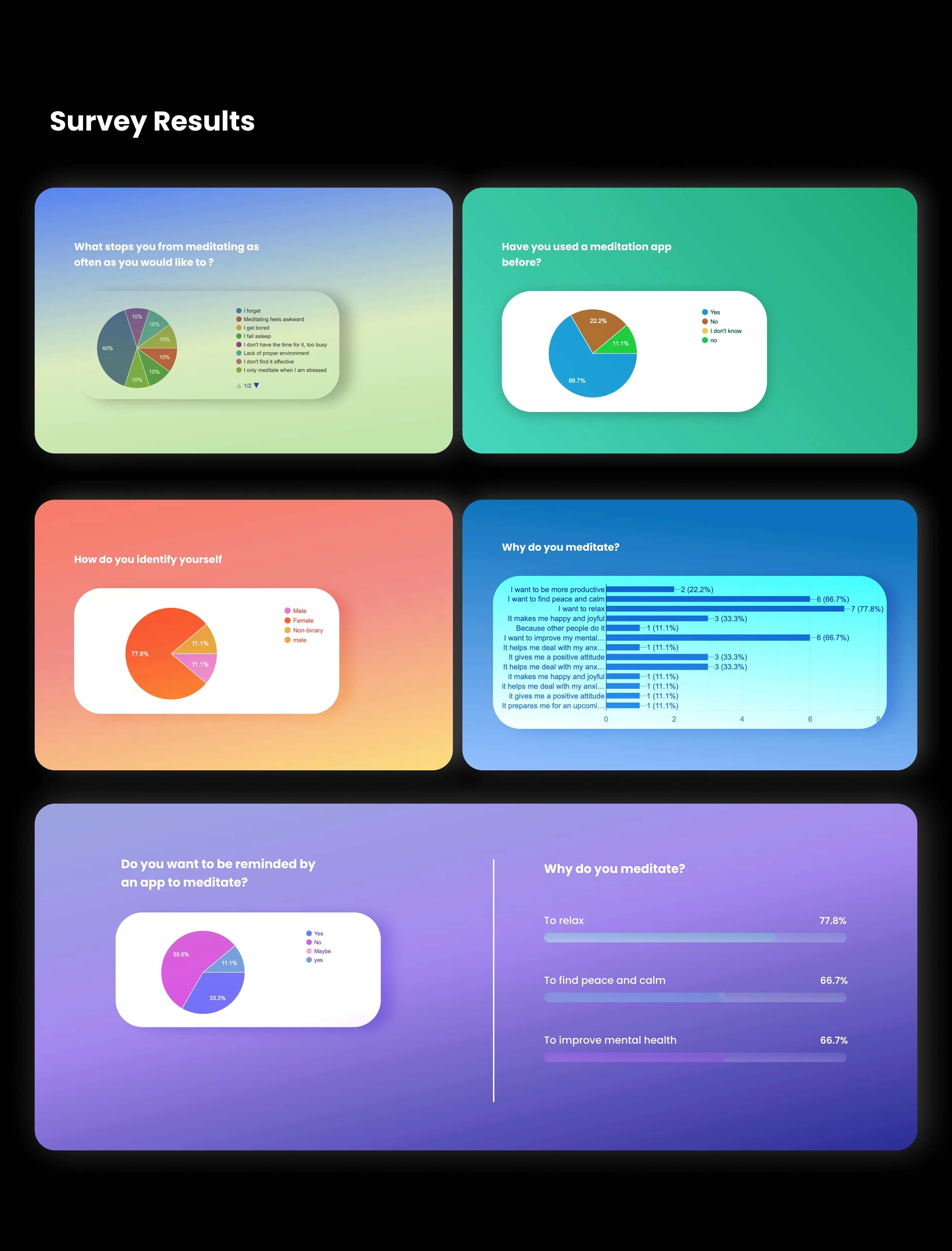
Survey Summary
Key Insights
66.7% of users have tried meditation before, but sticking with it long-term? Big nope. Why? Because expectations are messing things up. Their minds are hungry for results, and when meditation doesn’t deliver instant zen, they bounce. The truth is, meditation isn’t a magic switch; it’s a training process for attention. Users often don’t get this, and that lack of understanding becomes a major roadblock.
Problem Statement #1: How might we educate users continuously on what meditation really is and support them during moments when they feel like throwing in the towel?
Most people struggle to remember to meditate because it feels generic and, honestly, kinda boring—especially when life throws distractions left and right. The importance they attach to the practice is low, so skipping is just way too easy.
Problem Statement #2: How might we design an immersive, personalized experience that hooks users back in and makes meditation feel essential, not optional?
78.9% of users download meditation apps for well-being. But well-being is multi-faceted. It’s not just sitting still and breathing—it’s about consistent meditation, setting goals, visualizing success, tracking progress, and learning more about yourself along the way.
So, Omniwell shouldn’t just be a meditation app—it needs to be an all-in-one well-being coach that solves all these pain points with smart, personalized tools that keep users growing and glowing.
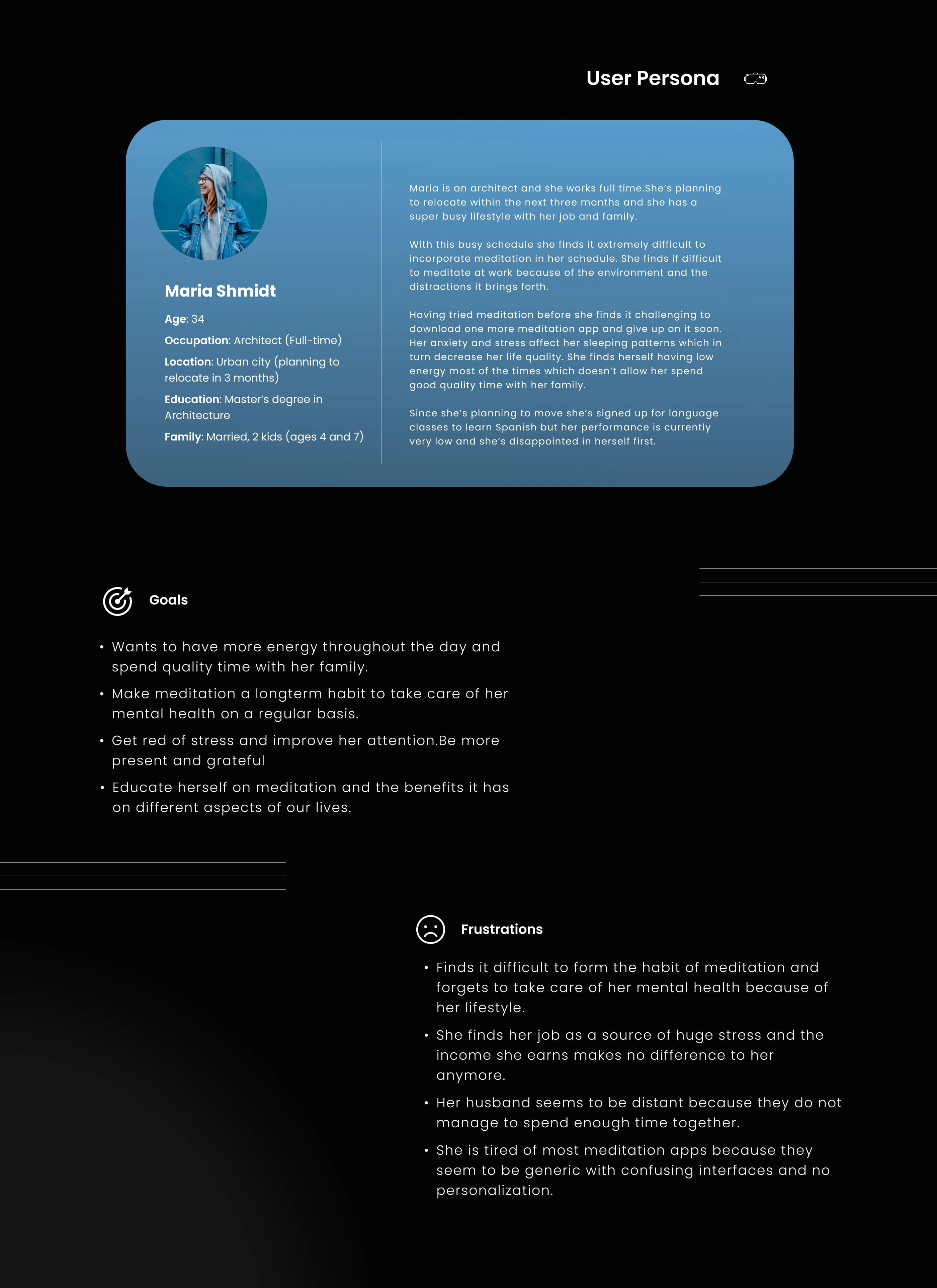
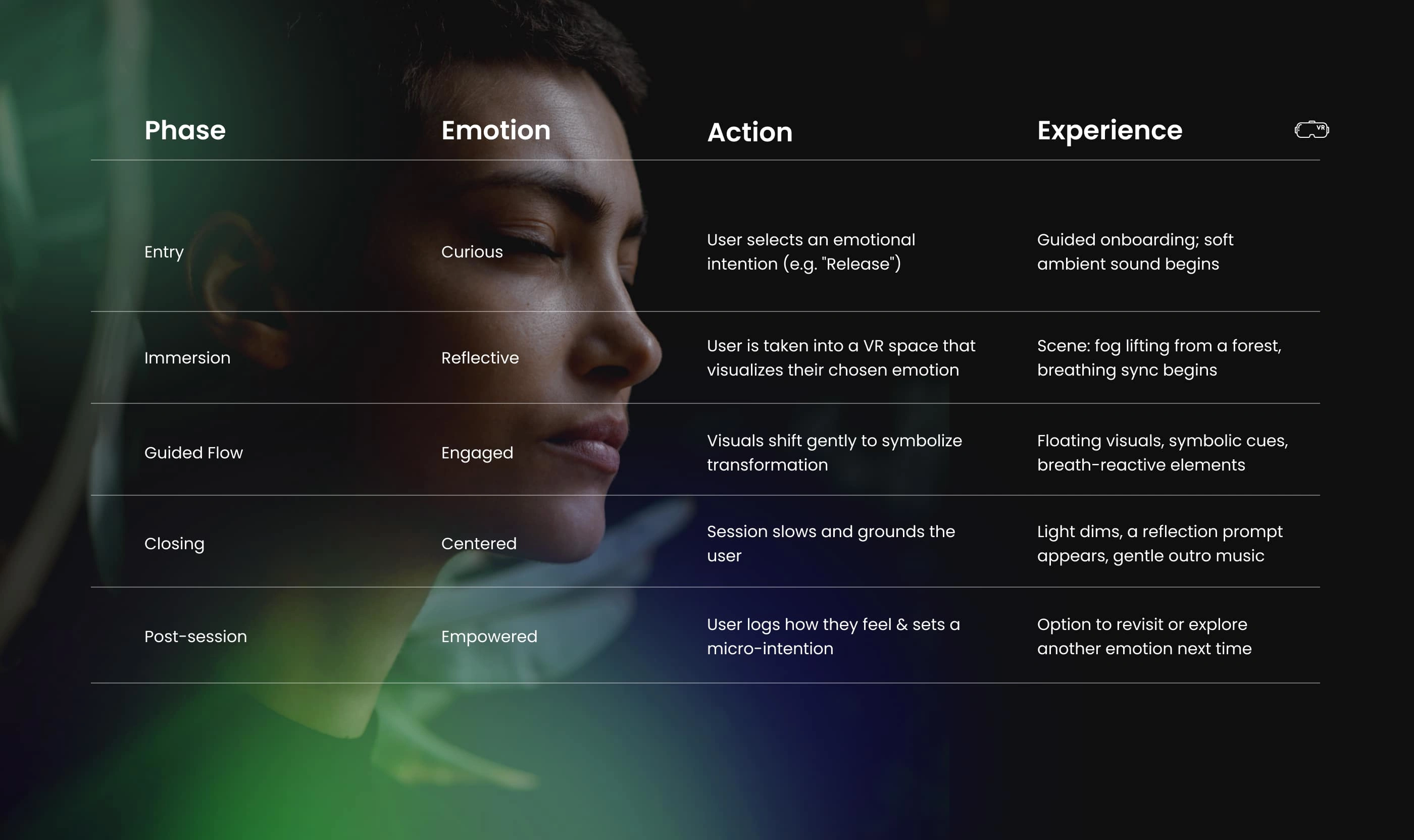
User Journey Map
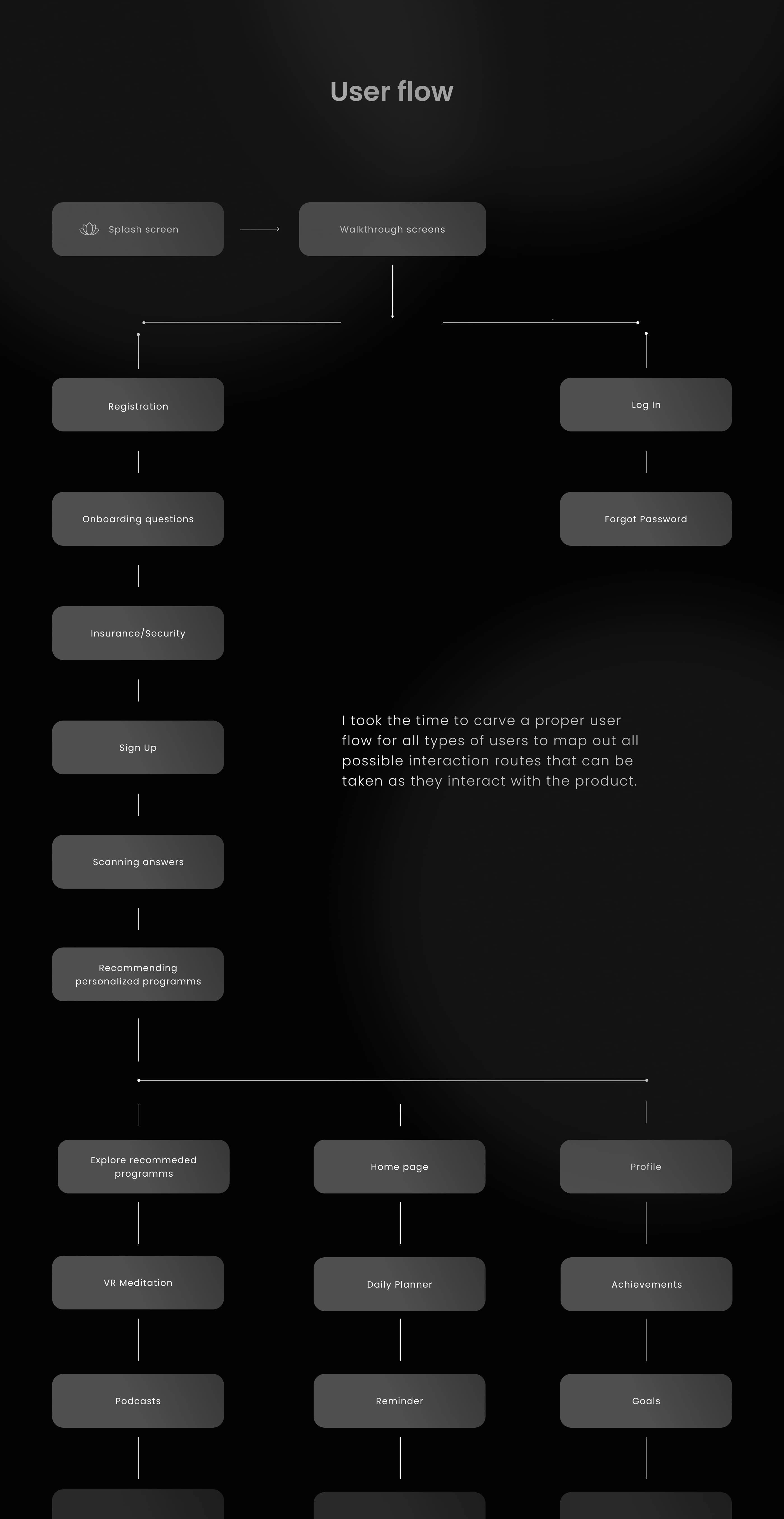
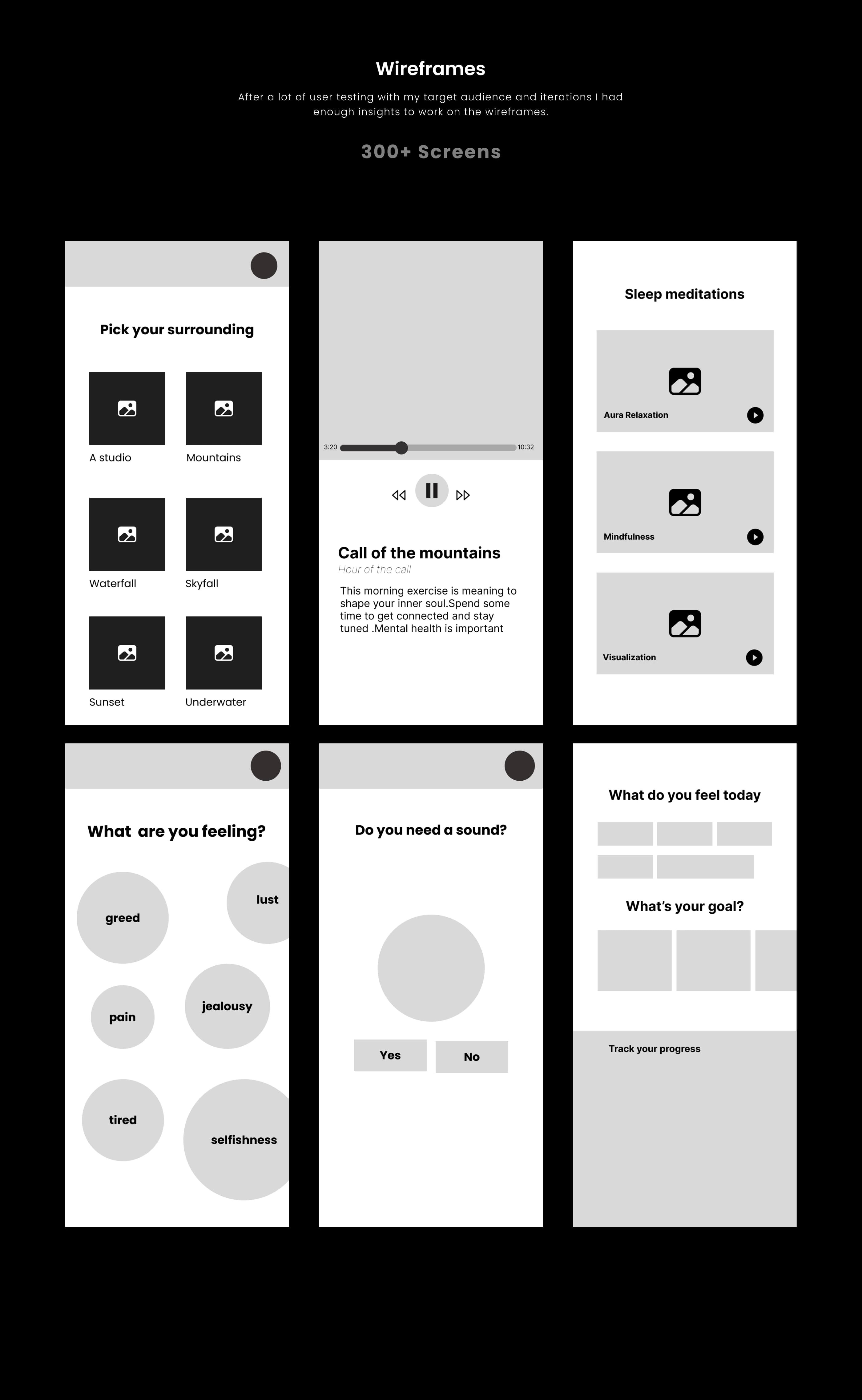
🎨 Visual Direction
Omniwell’s visuals were built to trigger emotional resonance.
Visual Design:
Abstract landscapes and symbolic environments (e.g., forests, oceans, starlit skies)
Slow animations like blooming, floating, glowing, and dissolving
A muted, warm palette with soft gradients that promote ease and presence
Each emotion/state has a dedicated visual identity
![📸 Moodboard or stills from visual environments]
📱 The (Minimal) UI
UI is purposefully bare — just enough to guide, never enough to interrupt
Audio is synced with visual progression
Sessions are sorted by desired emotional outcome, not just categories
Microinteractions:
Tap and hold to set intention
Swipe to shift visual states
Voice-over integration allows hands-free flow
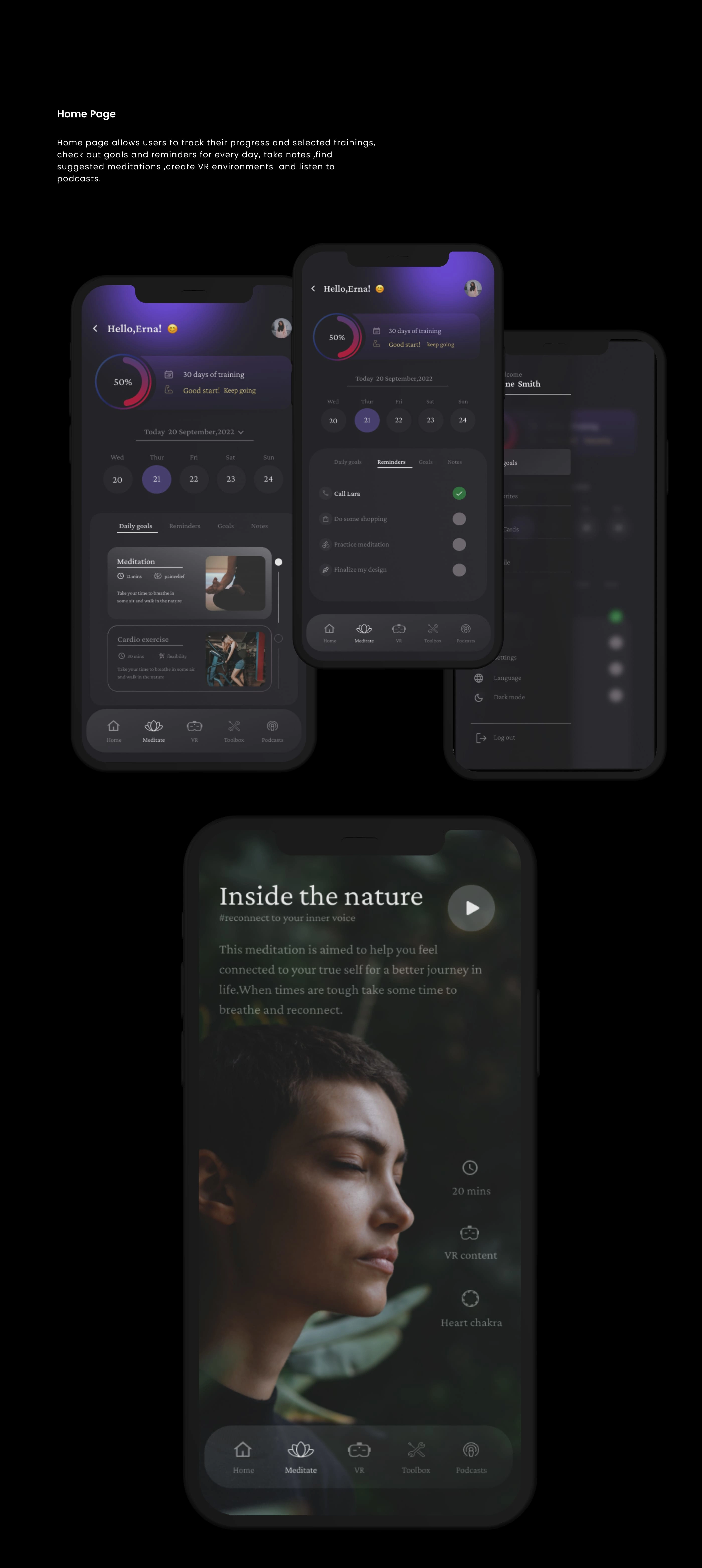
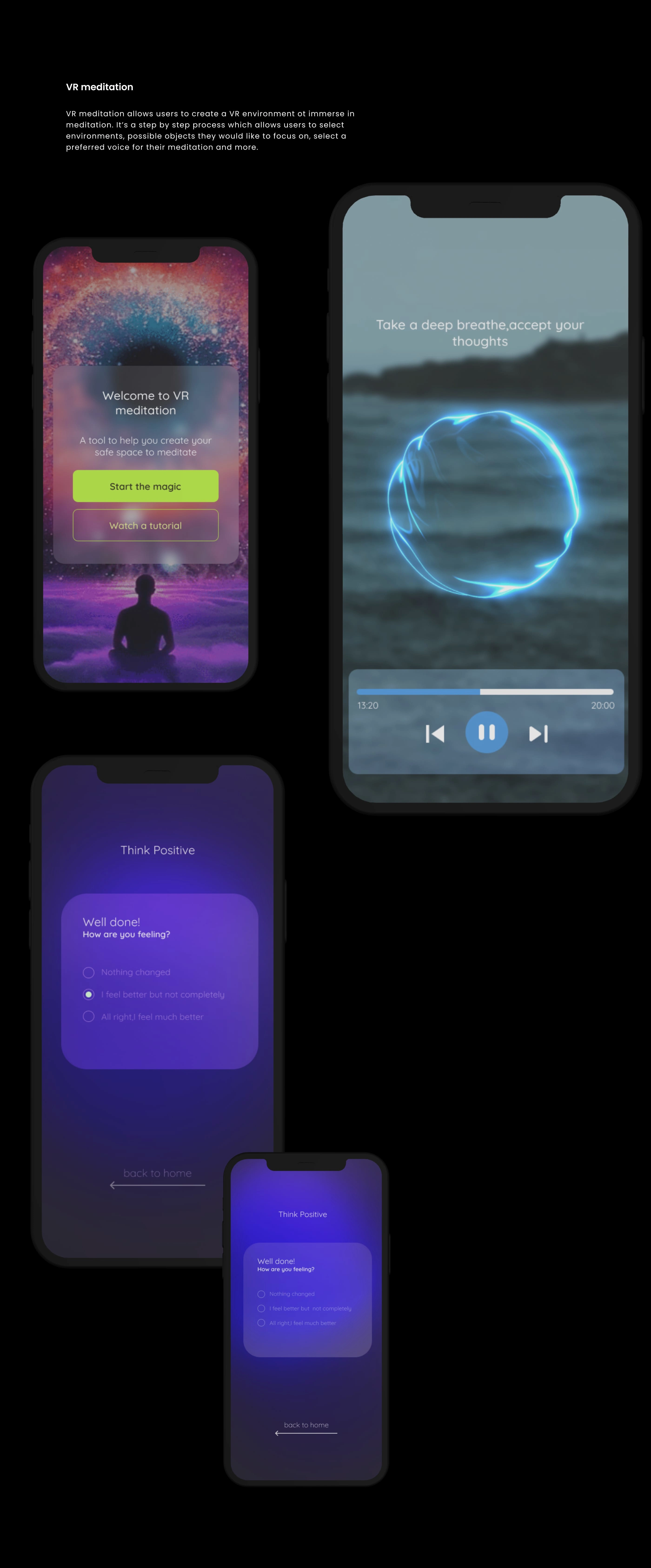

💭 Reflections
Omniwell taught me that sometimes, the best UX isn’t loud or clever — it’s intuitive, emotional, and invisible. Designing for healing means leaving space for the user to show up exactly as they are.
🎧 What’s Next?
Integrating AI-guided visual responses (real-time changes based on mood inputs)
Exploring AR extensions for mobile-based micro-meditations
Partnering with mental health orgs to explore this as a tool for trauma-informed design
Like this project
Posted Apr 22, 2025
Crafted a holistic wellness app that merges immersive visuals with science-backed mindfulness flows. The UX is designed for clarity and calm.





